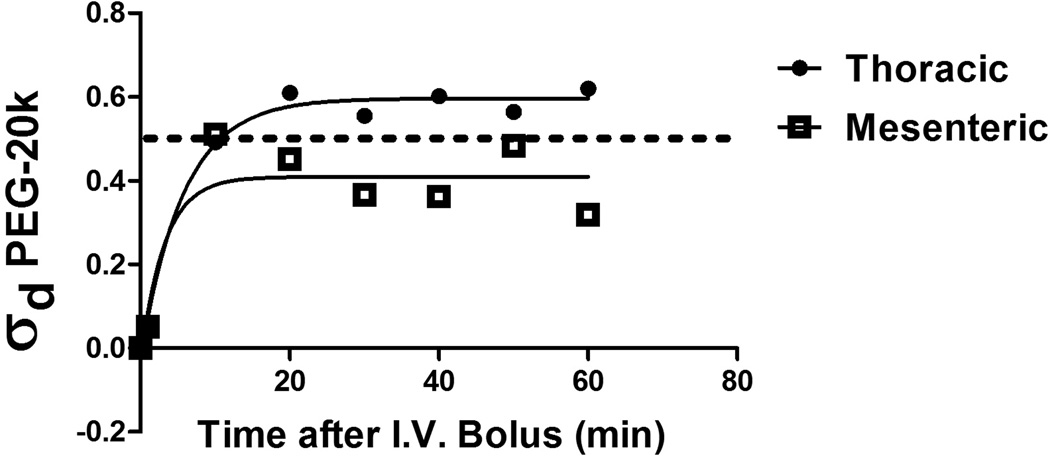Figure 4.
The oncotic reflection coefficient (σd) for PEG-20k was measured in six rats to determine the impermeant and the oncotic effects of this molecule in both the mesenteric vascular bed and the thoracic bed. FITC-labeled PEG-20k was used as a tracer molecule and the reflection coefficient was determined by measuring the lymph (L) to plasma (P) concentrations of FITC-PEG after an IV injection of the tracer under conditions of high lymph flow induced by volume loading with I.V. saline infusions (0.25 ml/min). Lymph was sampled from a cannula placed into the thoracic duct to drain either the thoraces or the mesentery. FITC-labelled PEG-20k was measured by excitation-emission spectrofluorometry. The oncotic reflection coefficient was calculated as 1-L/P for PEG-20k at high lymph flow rates to make transport across the capillary totally dependent on convective solvent drag transfer and independent of diffusion. A coefficient of 1.0 indicates complete reflection back into the capillary and describes a pure oncotic agent. A reflection coefficient of 0 indicates no reflection at high lymph flow rates and describes a pure impermeant molecule (providing it is impermeant to cell membranes). The actual measured σd for PEG-20k was about 0.60 in the thoracic tissues and 0.40 in the mesenteric tissues, which suggest the molecule is in fact behaving as a hybrid where some escapes into the interstitial space to act as an impermeant and a large amount of the material stays in the capillary where it behaves as an oncotic agent. The lower values in the mesentery is consistent with the known fenestrated “leaky” capillaries in the gut. The hybrid behavior is consistent with its physiological effects on blood pressure and low volume tolerance following shock. This property also explains why PEG-20k is effective by itself without classic impermeants (like gluconate) added with it. The values of σd at each time point represent the average of 3 independent values from 3 animals for each vascular bed.

